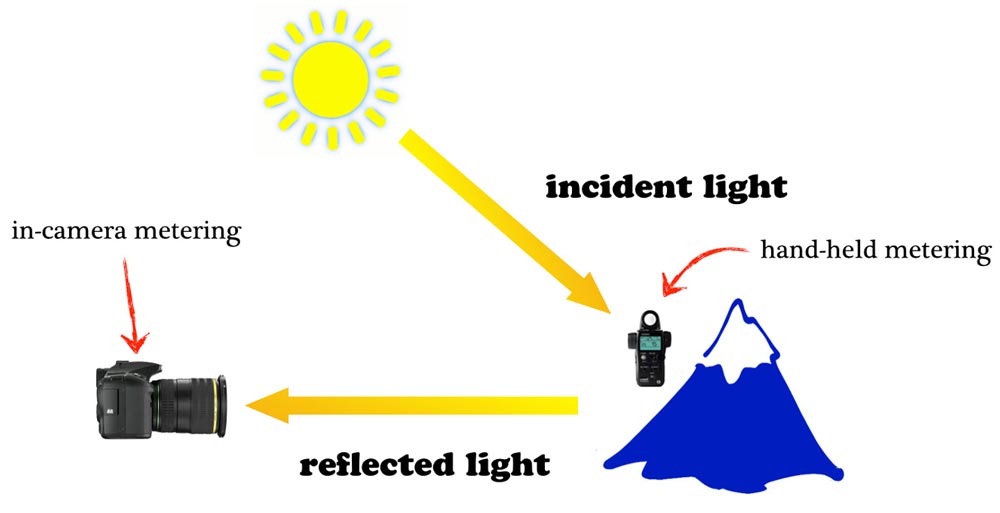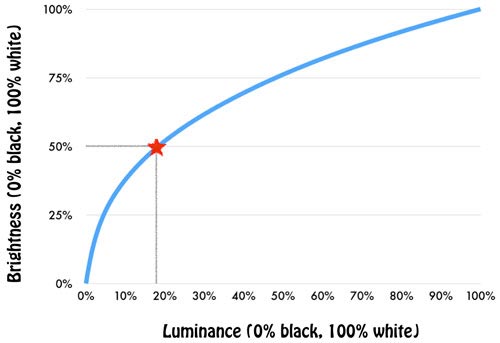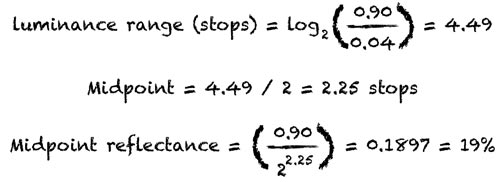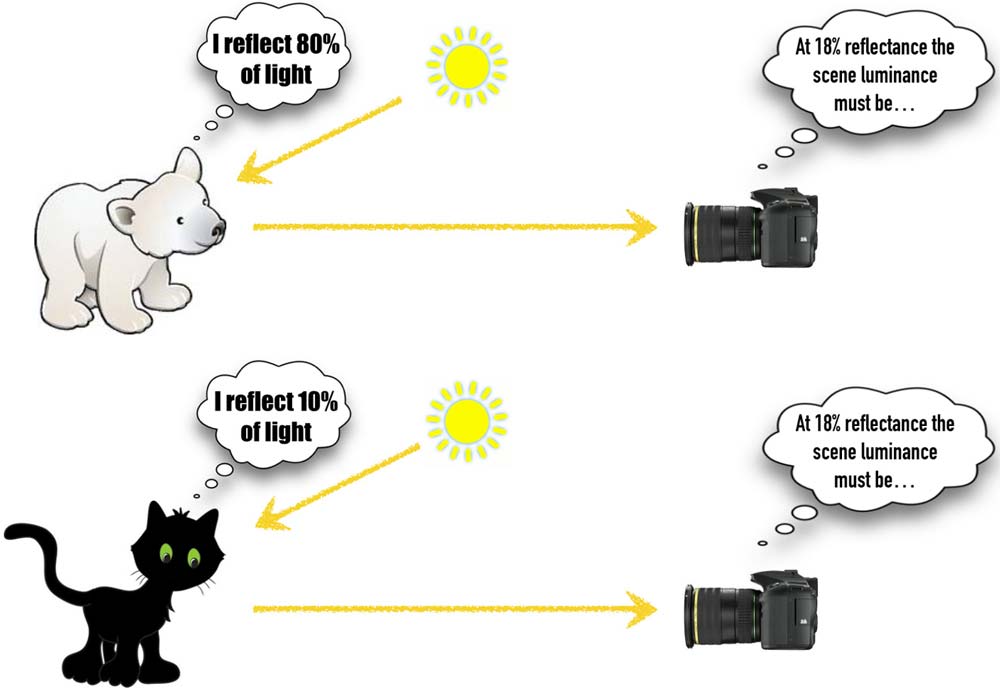First of all, we need to make a clear distinction between reflected and incident light, which is best done by a diagram.

[mks_pullquote align=”left” width=”300″ size=”24″ bg_color=”#d7d7d7″ txt_color=”#000000″]Middle Grey[/mks_pullquote]The ultimate aim for any photographic system is to get the correct exposure for any given light level. Metering off reflected light is an issue because the reflectance of our subject is not always the same (e.g. snow and a charcoal). No matter how good the in-camera sensor it cannot know the reflectance of the subject (high reflectance in poor lighting and low reflectance in good lighting may ultimately give the camera the same reading) so the photographic industry has adopted a standard of assuming that the subject matter has a reflectance of 18% (there is some debate about this figure and it appears to differ between manufacturers but safe to say it is within a 12-18% range). This presents what is known as “middle grey”.
Why 18%?
Some quick definitions, before we get ourselves muddled:
These can be measured using physical devices:
LUMINANCE is the amount of visible light that comes to the eye from a surface
ILLUMINANCE is the amount of light incident to the surface
REFLECTANCE is the proportion of light reflected from a surface
Luminance = Illuminance + Reflection
These cannot—they relate to human perception of light:
LIGHTNESS is the perceptual correlate of reflectance (perceived reflectance)
BRIGHTNESS is the perceptual correlate of luminance (perceived luminance)
Camera sensors are linear devices; that is to say, if you double the amount of light hitting the sensor the camera output will double (so long as you are still within the camera’s dynamic range). Our perception of light, on the other hand, is not linear and can be approximated as 0.42 power of luminance. Thus middle grey with its 18% reflectance ratio, gives a brightness of 0.180.42 = 0.487 or 48.7%, which is pretty close to 50%. Another way to think about this is that the photographic industry assumes that the average scene has an average luminance (0% being black, 100% being white, and 50% being in the middle) and then the 18% reflectance is worked out from that assumption. The below graph shows the human visual response (Brightness vs Luminance). Note the almost linear nature of our response up to 3-4% reflectance (we are very sensitive to small changes in the dark). At the other end of the scale changes in luminance between 90-100% don’t really change our perception of lightness a great deal.
In the real world, the reflectance of objects typically varies between 4% and 90% in an approximately 4.5 f-stop range for the subject (the f-numbers follow a logarithmic scale). Under these assumptions 18% is a good approximation to the average reflectance of the subject.
Or seen on the 4.5-stop scale…
The problem for photographers is there isn’t really such a thing as the average scene. A polar bear and a black cat are typically given as subjects that can “trick” the camera’s metering sensor and produce an incorrect exposure.
The above scenes would result in the camera under-exposing the polar bear (it assumes that the luminance is higher than it actually is to account for the high reflectance) and over-exposing the black cat (for the opposite reason). For this reason some photographers (typically portrait photographers where the lighting will not change from shot to shot) carry around a “gray card”. This is simply a card that, being middle grey, reflects exactly 18% of the light and so by metering the camera off this surface it can accurately calculate the correct scene luminance! Obviously, this is not practical for most outdoor photography unless you have a minion who can run in any direction you point the camera with a grey card in hand…



